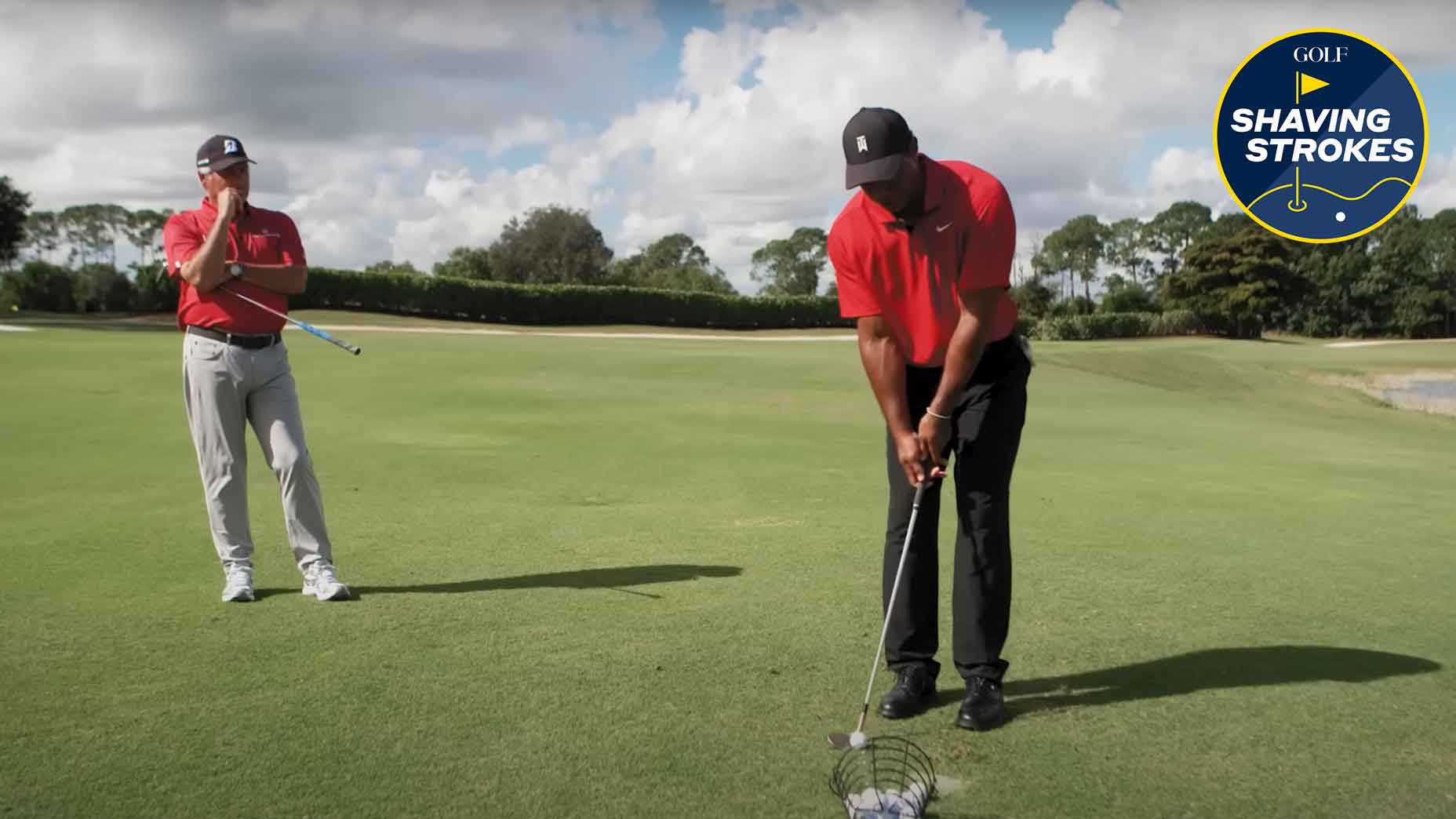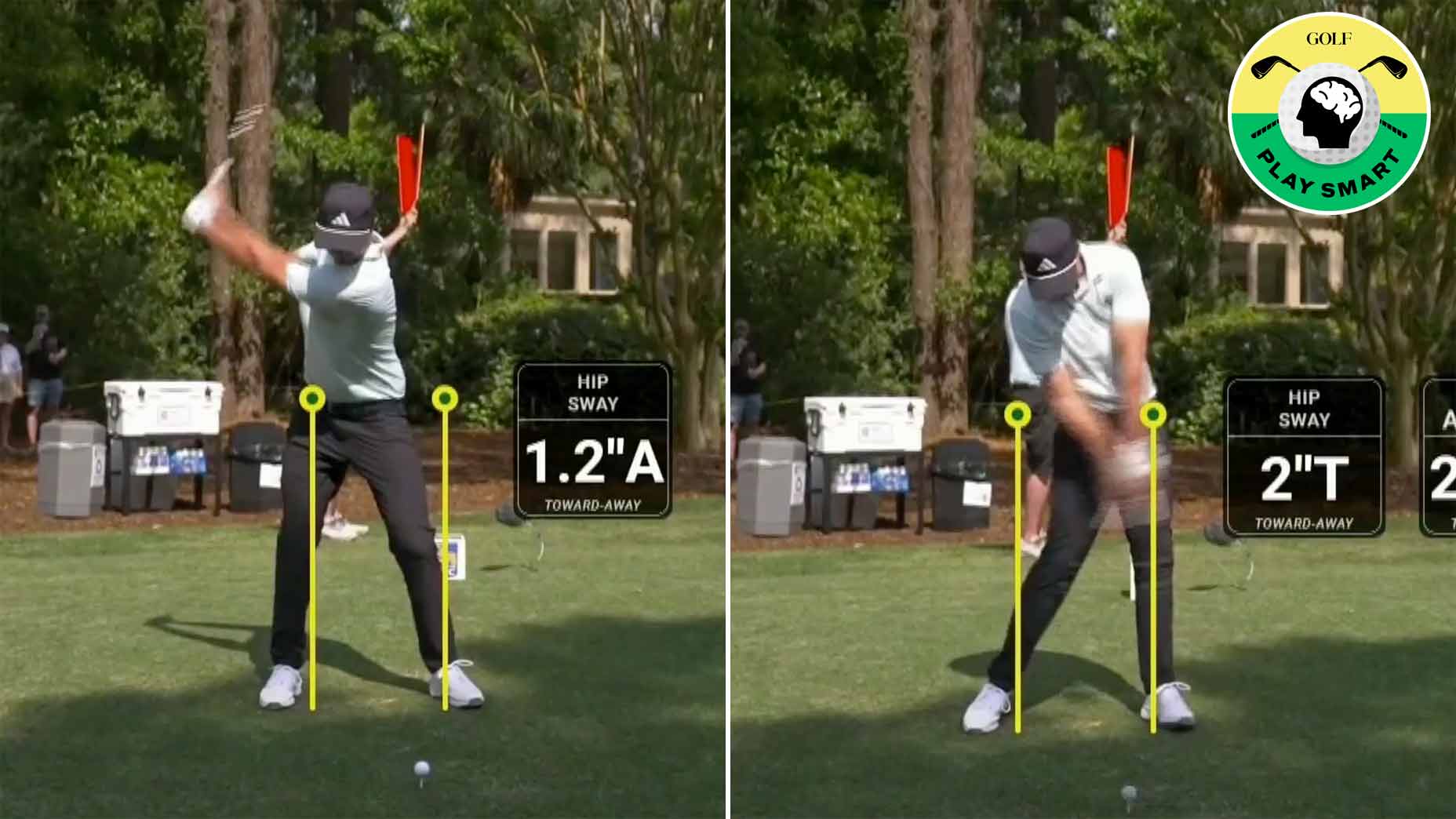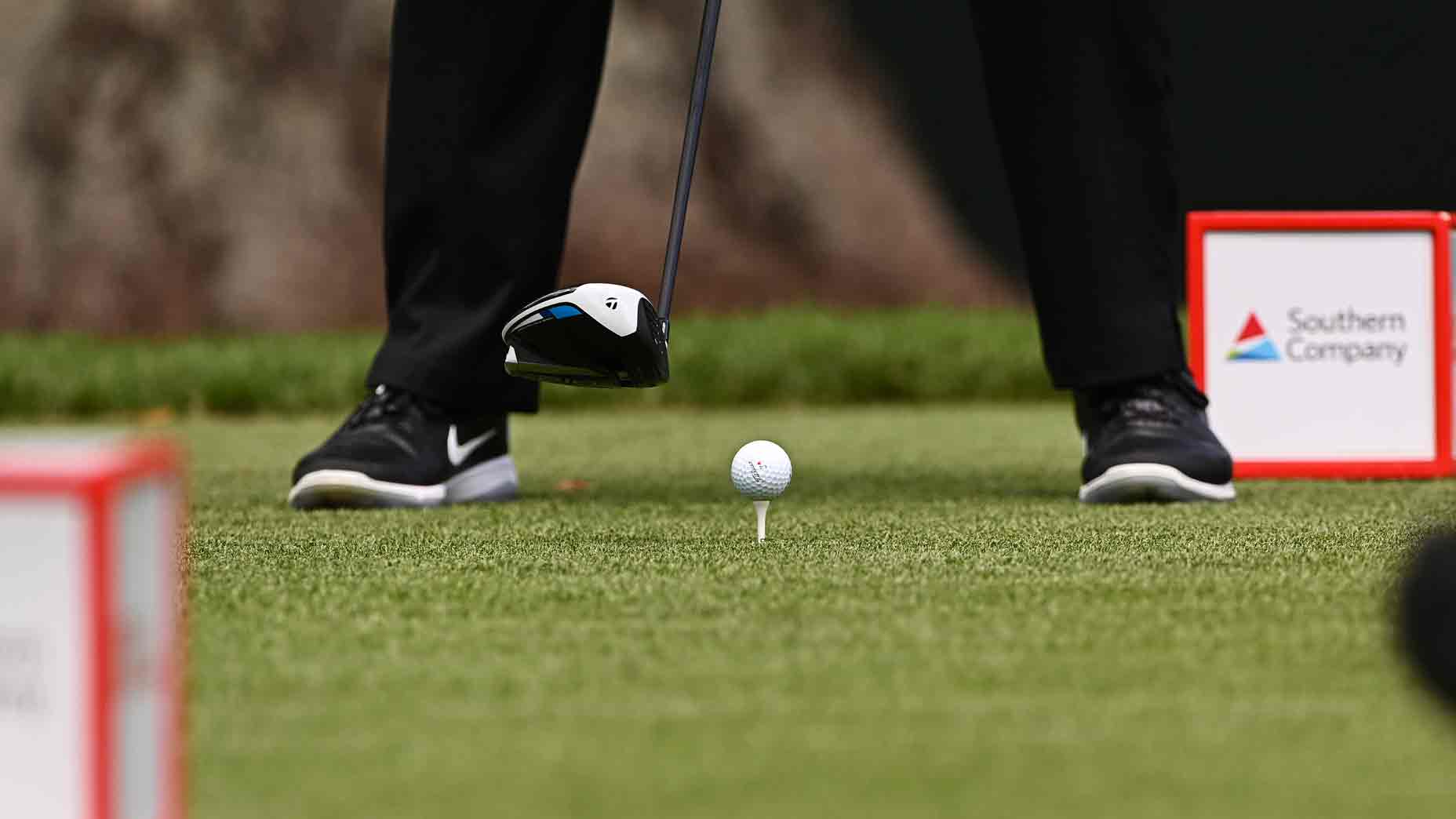I’ve been researching and teaching the short game for 35-plus years. And I’ve shared what I know in the pages of GOLF (some 300 issues!) and in more than a half dozen books. My short-game “gospel” has helped millions of golfers and fueled players to 21 different major victories. So I’ve decided to take from the tens of thousands of words I’ve written and give you seven simple lessons that can make you great around the greens right now. Each tip works across the entire spectrum of short-game shots. Using any one of them will save you a stroke or two, and if you put all seven of them into action, your scores will drop like, well, a high-lofted wedge shot. So let’s get started!
1. Swing “Short to Long”
On pitch shots, make a short backswing (about where I am here) and swing into a longer follow-through (photo, opposite page). Swinging “short-to-long” like this ensures that your wedge will accelerate naturally through and past impact, leaving no wasted energy on the table. The result? Crisp contact and pitches that always reach the target. If you tend to come up short on pitches, you’re probably swinging “short-to-short.”
Technically, matching the length of your through-swing to the length of your backswing can work, but your timing has to be perfect to reach max velocity at the moment of impact.


On all pitch shots, make a “short-to-long” swing with ample wrist hinge. Let the club accelerate smoothly into and through impact. Avoid “hitting” the ball at all costs. “Glide” the club to a finish. When you try to match your through-swing to your backswing, you run the risk of decelerating.
Matching the length of your through-swing to your backswing (top sequence, right) takes Tour-level timing. And worrying about swing length may make you decelerate into impact (bottom sequence). When this happens, the clubhead passes your hands through impact, leading to fat, thin or weak contact.
2. Get Groovy
Backspin is your best friend on many short shots. It lets you control distance and avoid rolling the ball too far past the pin. Better technique helps, but so do clean grooves. Take a second to rid the clubface of dirt and grass after you swing—it makes a big difference.
3. Play the Percentages
Start charting how far you leave your short-game shots from the hole. Calculating this Percent Error Index (see equation, right) lets you gauge your progress and more efficiently allocate practice time to weaker areas in your short game. I use the Tour’s Shotlink data to do the same thing with my stable of pro students. Knowledge is power!
To calculate your Percent Error Index (PEI), divide the yards remaining to the hole by the original shot distance. In this example, the player left a 60-yard wedge six yards from the pin, so the PEI is 10. Anything higher than 20 is a weak spot. Your goal? A PEI of 15 or lower for any short-game shot.
4. Blast to Safety
Unless you’re scratch, your primary objective on bunker shots is to get on the green. Make it easy by aiming where there’s more green to hit.
0-Handicap: Your dispersion pattern is tight—try to hole it!
10-Handicap: Go at the flag if there’s lots of room beyond the stick. Otherwise, play it safe.
20-Handicap: You’re still too inconsistent to aim at the flag. Pick a landing spot and leave plenty of room for error.
30-Handicap: Your wide dispersion pattern mandates aiming at the fat of the green. Pin-hunting is far too risky.
5. Play a Wedge-Friendly Ball
Manufacturers tempt you into playing harder balls by promising big distance, but harder balls are harder to get up and in. Opt for urethane-covered multipiece balls (especially if they have “spin” skins) to help your shots grab the green. (Psst—these models are plenty long, too.)
6. Play a Game of High-Low

At times you’ll need to wedge it high to carry that bunker or creek. Other times (windy days, or when dealing with low-hanging branches), you’ll have to hit a low bump-and-run. Adjusting trajectory is a valuable skill—it expands your short-shot arsenal and gives you options, no matter what the course throws at you. Here’s how to take the high road or the low road, at will.
7. Keep It Simple
Did you know you can use the same swing for a chip, wedge and sand shot simply by adjusting ball position? For chips, keep the ball even with your back ankle to ensure a descending blow. For clean contact on wedges and pitches, center the ball in your stance. From bunkers, position the ball in line with your front instep. Now your club will correctly hit the sand behind the ball without forcing you to change your swing.







